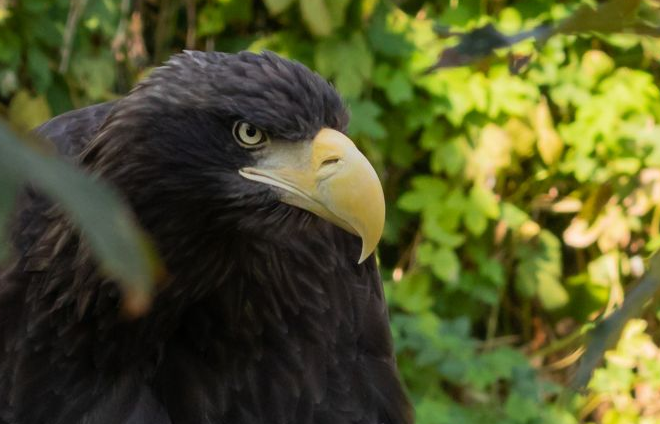The Royal Bengal Tiger is a subspecies of tiger that is native to the Indian subcontinent, including Bangladesh, India, and Nepal. In Bangladesh, it is considered Bangladesh National Animal and is highly revered for its strength, beauty, and cultural significance. However, this magnificent animal is also facing numerous threats, including habitat loss, poaching, and human-tiger conflict.
Physical Characteristics of the Royal Bengal Tiger
The Royal Bengal Tiger is the largest of all the tiger subspecies, with males weighing up to 570 pounds and measuring up to 10 feet in length. They have a distinctive orange coat with black stripes, and their fur is thick and soft to keep them warm in the cooler months. Bengal tigers also have a white belly and a white spot on the back of their ears, which helps to differentiate them from other tiger subspecies.
Habitat and Distribution of the Royal Bengal Tiger in Bangladesh
In Bangladesh, the Royal Bengal Tiger is found in the Sundarbans mangrove forest, which is the largest mangrove forest in the world. This unique habitat is characterized by the presence of numerous rivers, channels, and small islands, which provide an ideal environment for tigers to thrive. However, due to human activities such as logging, agriculture, and fishing, the Sundarbans has been greatly fragmented, leading to habitat loss and degradation.
Behavior and Social Life of the Royal Bengal Tiger
The Royal Bengal Tiger is a solitary animal that prefers to hunt alone, typically at night. They are opportunistic predators that feed on a variety of prey, including deer, wild pigs, and other small mammals. Bengal tigers are also excellent swimmers and are known to swim across rivers and channels in search of prey. In terms of reproduction, female tigers give birth to 2-4 cubs every 2-3 years, and the cubs stay with their mother for up to 2 years.
Threats and Conservation Efforts for the Bangladesh National Animal
The Royal Bengal Tiger is listed as an endangered species, with only around 2,500 individuals remaining in the wild. The major threats to their survival include habitat loss and fragmentation, poaching, and human-tiger conflict. To address these issues, the government of Bangladesh has implemented various conservation and management initiatives, such as establishing protected areas, increasing patrols, and promoting community-based conservation efforts. These efforts have led to some success stories, such as an increase in tiger numbers in the Sundarbans in recent years.
Human-Tiger Conflict in Bangladesh
Human-tiger conflict is a significant problem in Bangladesh, as tigers occasionally attack humans who venture into their territory. This can result in injury or death to both humans and tigers. To mitigate this conflict, various strategies have been implemented, such as the relocation of problematic tigers and the establishment of community-based conflict resolution programs. However, more work is needed to address this complex issue and reduce the number of human-tiger conflicts.
Role of the Bangladesh National Animal in Bangladeshi Culture and History
The Royal Bengal Tiger has played a significant role in Bangladeshi culture and history, with numerous folk tales, songs, and poems featuring tigers as symbols of strength, bravery, and beauty. Tigers are also important in Hindu and Buddhist mythology, and have been depicted in art and literature throughout history.
Conclusion
The Royal Bengal Tiger is an iconic species that holds a special place in the hearts of Bangladeshis. While they face numerous threats to their survival, there is hope for the future of this magnificent animal. With continued conservation efforts and community-based initiatives, it is possible to ensure that the Royal Bengal Tiger remains a symbol of strength and beauty for generations to come.
References:
Ahmed, M. F., & Barlow, A. C. D. (2017). An overview of the ecology and conservation of the Bengal tiger in the Sundarbans mangrove forest of Bangladesh. Global Ecology and Conservation, 11, 48-60.
Chowdhury, S. U., & Jhala, Y. V. (2019). Tiger (Panthera tigris tigris) conservation in Bangladesh: progress, problems, and prospects. Mammal Review, 49(3), 217-229.
Islam, M. A., Islam, M. Z., & Haque, M. E. (2019). An overview of human-tiger conflict and its management in Bangladesh. Ecology and Evolution, 9(10), 5701-5716.
Naha, D., & Chakraborty, S. (2016). Royal Bengal Tiger (Panthera tigris tigris) and its cultural importance in Sundarbans, India. Journal of Threatened Taxa, 8(4), 8732-8736.
Sarker, S. K., & Barlow, A. C. D. (2018). Community-based conservation initiatives for the endangered Bengal tiger Panthera tigris tigris in the Sundarbans, Bangladesh. Oryx, 52(4), 677-683.

